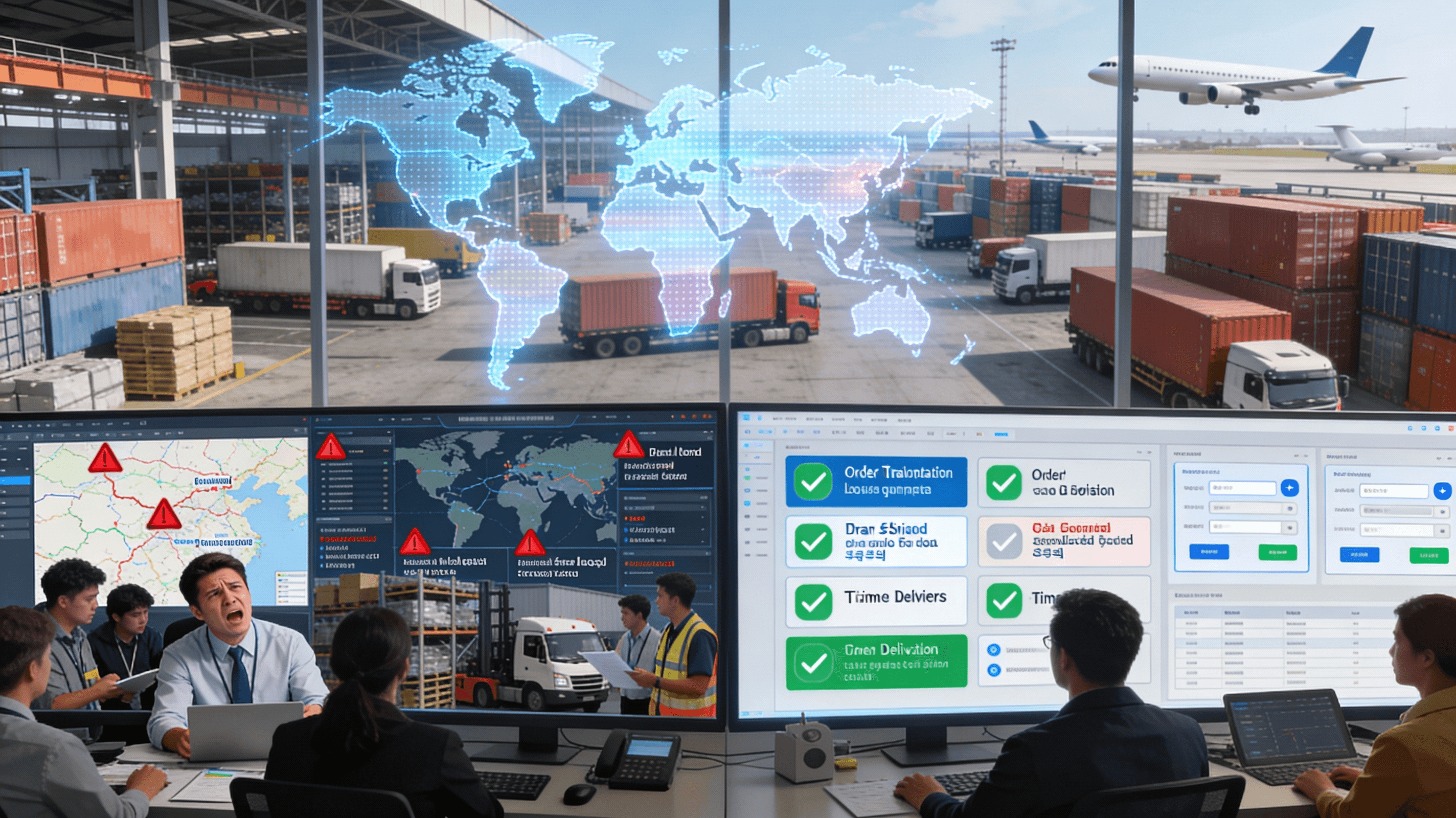Dynamic Freight Pricing Intelligence: AI Agents for Real-Time Profit
Monday, 27 Oct 2025
|
Introduction: Moving Beyond Static Rates in a Dynamic World
In today's volatile freight market, relying on static, contract-based pricing models is equivalent to leaving 10-15% of potential profit on the table. Traditional methods, bound by annual negotiations and manual rate sheets, are too slow to react to the real-time fluctuations in capacity, demand, fuel costs, and weather that define modern logistics. The key to unlocking this trapped value lies in Dynamic Freight Pricing Intelligence, where autonomous AI agents automatically analyze market conditions, optimize spot-buys, and even negotiate rates in real-time to capture fleeting opportunities and maximize margins on every single transaction.
For logistics executives—CEOs, CXOs, and COOs—this represents a paradigm shift from a reactive, cost-plus mindset to a proactive, profit-driven strategy. This in-depth analysis will dissect the mechanics of AI-driven pricing intelligence, exploring how automated negotiation and adaptive algorithms respond to market volatility with superhuman speed and precision. Drawing on proven frameworks and real-world examples, we will provide a strategic blueprint for implementing these systems, empowering your organization to not just respond to the market, but to master it. In a world where every percentage point of margin counts, dynamic pricing isn't just an advantage; it's the future of freight commerce.
The Crippling Inefficiency of Traditional Freight Pricing
The long-standing practice of setting freight prices through annual RFPs and fixed-rate contracts was designed for a more stable and predictable world. While this approach offers a baseline of budget certainty, its rigidity creates significant financial leakage in a market defined by constant change. When market capacity loosens and spot rates fall below contracted rates, companies are locked into overpaying for their shipments. Conversely, when capacity tightens and spot rates soar, they may find their contracted carriers rejecting tenders, forcing them into the exorbitant spot market at a premium or facing service failures.
This system forces human planners into a constant, unwinnable guessing game. They lack the real-time data and analytical power to know precisely when to leverage contract rates versus the spot market, or how to price their own services to reflect the immediate supply-demand balance on any given lane. This results in a persistent "pricing gap"—the difference between the price paid or charged and the true market-optimal price at that exact moment. For a mid-sized 3PL or shipper, this gap can easily translate to millions of dollars in lost profit or excess costs annually.
The AI Agent Revolution: How Dynamic Pricing Intelligence Works
AI-powered dynamic pricing intelligence moves beyond static rules and into the realm of autonomous, data-driven decision-making. AI agents serve as the engine for this revolution, continuously performing three core functions in a perpetual loop.
Real-Time Data Ingestion: The agents act as insatiable data collectors, integrating with dozens of internal and external sources simultaneously. They pull data from your TMS and order history, but also continuously monitor public load boards, real-time fuel price indices, port congestion reports, weather forecasts, carrier capacity APIs, and even macroeconomic indicators. This creates a high-fidelity, multi-dimensional view of the market that is impossible for a human to assemble.
Predictive Market Forecasting: Using this rich dataset, machine learning models, particularly time-series forecasting algorithms, predict near-term market behavior. The agents don't just know the current spot rate on a lane; they predict where that rate is headed in the next hour, day, or week. They forecast capacity crunches before they happen and identify emerging "backhaul" opportunities that aren't yet visible on public boards.
Algorithmic Price Optimization: With a clear picture of the present and a probabilistic forecast of the future, the agent's optimization engine calculates the ideal price. This isn't a single number but a dynamic strategy. For a shipper, it might be the optimal bid to secure capacity at the lowest cost. For a carrier or broker, it's the perfect rate to offer that maximizes profit while ensuring a high win rate. This calculation can be updated every second, ensuring that every decision is perfectly attuned to the market's pulse.
Core Capabilities: The Triple Threat of Automated Pricing Intelligence
AI-driven pricing systems create value through three interconnected, automated capabilities that work in concert to outperform any manual process.
Automated Negotiation: Your 24/7 Digital Procurement Team
Imagine having a team of expert negotiators working around the clock on every single shipment. That is what automated negotiation agents provide. Using Natural Language Processing (NLP), these agents can engage with carriers or shippers via email, chatbots, or direct API connections. When a quote request comes in, the agent instantly analyzes it against its internal pricing model and market data, formulates an optimal bid, and submits it—often in less than a second.
If a counter-offer is received, the agent understands the context and can autonomously decide whether to accept, reject, or make a revised counter-offer based on pre-defined profitability thresholds and its real-time market forecast. This capability dramatically accelerates the sales or procurement cycle, enabling companies to win more business and secure capacity faster than competitors who are still manually typing email responses. Leading platforms have shown this can increase quote win-rates by up to 25% while simultaneously improving margin per load by 3-5%.
Intelligent Spot-Buy Optimization: Mastering Market Volatility
The decision of when to use contract rates versus the volatile spot market is one of the most challenging in logistics. AI agents solve this dilemma with data. For every single load, the agent compares the company's contracted rate against its real-time prediction of the spot market rate, factoring in the reliability score of the carriers involved. If the spot market offers a significant saving with a reliable carrier, the agent can autonomously book the shipment on the spot market, capturing immediate cost savings.
This is particularly powerful for "urgent" or "exception" freight. Instead of a panicked planner paying a premium for the first available truck, the AI agent can scan thousands of available carriers on multiple spot market platforms simultaneously, identify the most cost-effective option that meets the delivery timeline, and book it automatically. This capability alone has been shown to reduce spot market spend by 12-18% on average.
Adaptive Pricing: Responding Instantly to Market Signals
Adaptive pricing is the ability to adjust rates in real-time in response to external events. AI agents excel at this by constantly monitoring for trigger events.
- A sudden snowstorm is forecast for the I-80 corridor? The agent can automatically apply a "weather premium" to rates for shipments in that lane, reflecting the increased risk and tighter capacity.
- A major competitor's fleet is grounded due to a labor action? The agent detects the capacity crunch from market data and can strategically increase prices to capture a "surge premium" while capacity is scarce.
- A large container ship arrives at port unexpectedly, flooding the local market with capacity? The agent can lower its rates for outbound freight to win volume at a still-profitable margin before competitors even realize the market has shifted.
This ability to react instantly and algorithmically to market volatility ensures that a company is never on the wrong side of a price swing, turning market chaos into a consistent source of profit.
Deepen Your AI Strategy on Debales.ai
- Autonomous Rerouting AI: Instant Supply Chain Resilience 2025
- Geopolitical Risk AI Monitoring: Real-Time Logistics Threat Tracking 2025
- AI Agents for Scenario Planning and Supply Chain Simulation
- The AI Agent Maturity Assessment: Benchmarking Your Organization
- AI Agents as 5-Year Differentiators: Building Logistics Market Moats
Stop Leaving Money on the Table
Is your pricing strategy built for yesterday's market or tomorrow's? Unlock the full profit potential of your freight operations with debales.ai's dynamic pricing intelligence platform.
Schedule Your Pricing Strategy Demo
Conclusion: The Future of Freight is Algorithmic
The era of static, manual freight pricing is over. In a world of constant volatility, the ability to sense and respond to the market in real-time is the single greatest determinant of profitability. Dynamic Freight Pricing Intelligence, powered by autonomous AI agents, provides this capability, enabling logistics companies to move from being price-takers to price-makers. For executives, adopting this technology is not just an operational upgrade; it is a fundamental strategic shift that builds a more agile, intelligent, and profitable business for the challenges and opportunities of the years to come.


